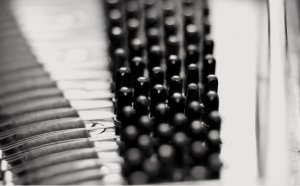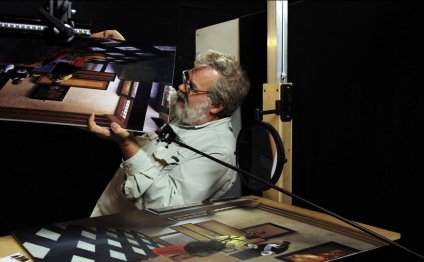
Music Lesson Vermeer
Comparing the girl with her reflection we can notice that the back of her head, directly seen, is more conventionally perceived, more recognizable, perhaps more touching, her reflected face, its detail dissolved, its humanity suspended in light, has a deeper kind of completeness. The face is reflected not only in the mirror but also in the painter's temperament. For the first time we have the sense that he has a use, however oblique, for the whole of human appearance.
Lawrence Gowing, Vermeer, 1952
signed lower picture frame at right IVMeer (IVM in monogram)c. 1662-1664 - Arthur K. Wheelock Jr. (Vermeer: The Complete Works, New York, 1997)
c. 1662-1663
Walter Liedtke Vermeer: The Complete Paintings, New York, 2008)
The plain-weave linen support has a thread count of 15 x 14 per cm2. The original tacking edges have been removed. Cusping occurs on all sides, more pronounced along top and bottom edges. The canvas has been lined.
The light brownish gray ground contains lead white, chalk, and a little umber, with aggregates of lead white particles. The paint is thinly and smoothly applied although some texture is present, as on the nearest edge of the bass viol, which stands out due to curling impasto.
The bottom half of the painting has a strong blue cast. The dark tiles in the foreground are blue while those further back in the composition are dark gray and contain no blue pigment. The shadow of the carpet on the table in the right foreground is dominated by a bright blue, which may be discolored. A pinhole with which Vermeer marked the vanishing point of the composition is visible in the paint layer.
* Johannes Vermeer (exh. cat., National Gallery of Art and Royal Cabinet of Paintings Mauritshuis - Washington and The Hague, 1995, edited by Arthur Wheelock)
image thanks to Mike Buffington
- (?) Pieter Claesz van Ruijven, Delft (d. 1674);
- (?) his widow, Maria de Knuijt, Delft (d. 1681);
- (?) their daughter, Magdalena van Ruijven, Delft (d. 1682);
- (?) her widower, Jacob Abrahamsz Dissius (d. 1695);
- his widow, Angela Carriera, Venice (1741-42);
- Joseph Smith, Venice and Mogliano (1742-62);
- King Georg III, Windsor Castle, as by Frans van Mieris, (1762 acquired with the Smith Collection);
- since 1762 Royal Collection, Windsor Castle and Buckingham Palace (inv. 109).
- London 1876
Exhibition of Works by Old Masters and by Deceased Masters of British School. Royal Academy of Arts.
The Music Lesson (no. 211) - London 1895
Temple, A. G. Catalogue of the Loan Collection of Pictures. Art Gallery of the Corporation of London.
92-93, no. 127. - London 1929
Exhibition of Dutch Art, 1450-1900. Royal Academy of Arts.
144, no. 305 and pl. 78. - London 1929
Dutch Art. An Illustrated Souvenir of the Exhibition of Dutch Art at Burlington House, London. Burlington House.
89, no. 107 and ill. - London 1946
Catalogue of Exhibition of the King's Pictures. Royal Academy of Arts.
108, no. 305. - The Hague 1948
Masterpieces of the Dutch School from the Collection of H.M. the King of England on the Occasion of 50-year Reign of Queen Wilhelmina. Mauritshuis.
30, no. 10 and ill. - London 1952
Dutch Pictures 1450-1750. Royal Academy of Arts.
1: no. 515, 2: ill. 45. - London 1971
Dutch Pictures from the Royal Collection. The Queen's Gallery. Buckingham Palace.
19 and 74, no. 10. - Philadelphia 1984
Sutton, Peter. Masters of Seventeenth-Century Dutch Genre Painting. Philadelphia Museum of Art.
344-345, no. 119 and ill. 109. - Johannes Vermeer - A Lady at the Virginals with a Gentleman (The Music Lesson). The Dulwich Picture Gallery.
- 204, no. 26 and ill.
- The Hague, Netherlands September. 29, 2016 - January. 8, 2017
Masters of the Everyday: Dutch Artists in the Age of Vermeer. An exhibition from the British Royal Collection. - The Hague Sept. 29, 2016 - Jan. 8, 2017
Masters of the Everyday: Dutch Artists in the Age of Vermeer. An exhibition from the British Royal Collection. - Masters of the Everyday: Dutch Artists in the Age of Vermeer. An exhibition from the British Royal Collection, The Queen's Gallery, Buckingham Palace
- Edinburgh March 4 - July 24, 2016 Masters of the Everyday: Dutch Artists in the Age of Vermeer. An exhibition from the British Royal Collection, The Queen's Gallery, Palace of Holyroodhouse
- Masters of the Everyday: Dutch Artists in the Age of Vermeer. An exhibition from the British Royal Collection, The Mauritshuis
| vermeer's life |
Vermeer's income in the 1660s was probably higher than in the 1670s. In the1660s, sales of paintings and especially his mother-in-law's (Maria Thins) substantial financial contributions together probably ranged from 850 to 1, 500 guilders a year. A mason earned about 500 guilders. Vermeer is elected for the first time headsman of the Guild of Saint Luke in Delft at the age of 30 for a two year term. However, by this time many artists resident in Delft had left for the more prosperous Amsterdam and so his election may have had less significance than once believed. He was the youngest artist to become headmaster since the guild was organized in 1611. Many of the luxury items seen in Vermeer's interiors such as the virginal seen in The Music Lesson were economically out of reach of the artist. They may have been lent to him by affluent men of culture or clients such as Diego Duarte, a rich Antwerp banker, in whose important art collection was cited "a young lady playing a clavecin, with accessories, by Vermeer." The virginal seen in Vermeer's The Music Lesson was built by Johannes Ruckers. These rare instruments were sold at about 300 guiders, about half the cost of Gerrit Dou, a Frans van Mieris. An averge Dutch house might cost 1, 000 guilders. In Delft, hese instruments were owned by the official town musician Scholl. |
| dutch painting |
Pieter Saendredam ( b. 1597) dies in Haarlem. Despite its decline, Delft remained and important city of passage for artists passing from Haarlem, Utrecht and Amsterdam. It contained a number of fine art collections. Ferries parted many times a day to the nearby The Hague and Amsterdam was less than a days away on an inexpensive horse-towed barge. |
| european painting & architecture | André Le Nôtre designs park and gardens of Versailles Louis XIV begins to build palace of Versailles; he makes Charles Lebrun his chief artistic adviser. |
YOU MIGHT ALSO LIKE
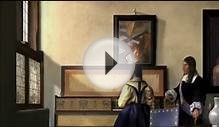


Share this Post
Related posts
Piano music lessons for Beginners
Teacher Dana S. Location: Muncie, IN Price: $25 for a 30-minute lesson Beyond the city or area you’re in, the price can also…
Read MoreMusic lessons toddlers
Find out why Musikgarten has no equal in early childhood music education. Simply put, children love music. Music touches…
Read More
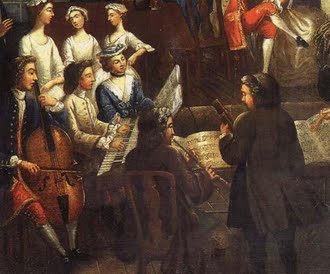 Chamber music is a form of classical music, written for a small group of instruments which traditionally could be accommodated in a palace chamber. Most broadly, it includes any art music that is performed by a small number of performers with one performer to a...
Chamber music is a form of classical music, written for a small group of instruments which traditionally could be accommodated in a palace chamber. Most broadly, it includes any art music that is performed by a small number of performers with one performer to a...
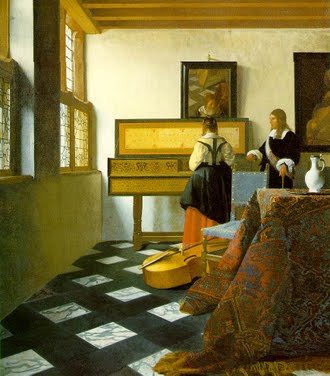 The Music Lesson or Lady at the Virginals with a Gentleman by Johannes Vermeer, also known as Jan Vermeer, is a painting of young female pupil receiving the titular music lesson. It has been estimated to have been painted between 1662 and 1665. The medium of the...
The Music Lesson or Lady at the Virginals with a Gentleman by Johannes Vermeer, also known as Jan Vermeer, is a painting of young female pupil receiving the titular music lesson. It has been estimated to have been painted between 1662 and 1665. The medium of the...
